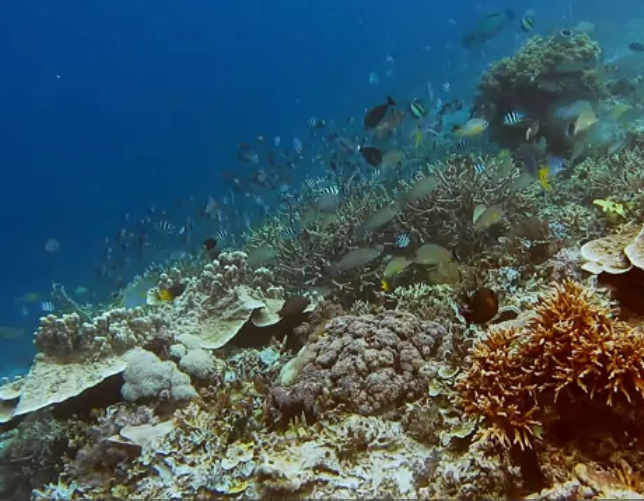| "Descrizione" by Carnob (1982 pt) | 2023-Jul-18 15:16 |
Review Consensus: 8 Rating: 8 Number of users: 1
| Evaluation | N. Experts | Evaluation | N. Experts |
|---|---|---|---|
| 1 | 6 | ||
| 2 | 7 | ||
| 3 | 8 | ||
| 4 | 9 | ||
| 5 | 10 |
Iodopropynyl Butyl Carbamate is a chemical compound, a carbamate ester.
It is formed by:
- Carbamate, an organic compound belonging to the carbamates, derived from carbamic acid, a functional group consisting of a carbonyl group (=O) linked to an amine group (NH2) and a hydroxyl group (-OH). In the context of Iodopropynyl Butyl Carbamate, the carbamate group is -NH-COO-.
- Butyl, a four-carbon alkyl group derived from butane (C4H10). It has the structure -C4H9. In Iodopropynyl Butyl Carbamate, a butyl group is attached to the carbamate group.
- Iodopropynyl is a three-carbon alkyl group with an attached iodine atom. The propynyl group has a triple bond that gives it the structure -C≡C-CH2-I.
Il procedimento di sintesi può variare a seconda del produttore o della qualità e purezza che si deve raggiungere, ma in modo esemplificativo, è il seguente:
- Identification of the raw materials and reagents required for the synthesis of Iodopropynyl Butyl Carbamate:
Butyl Carbamate. It is an organic chemical compound with the chemical formula C5H11NO2. It is one of the main components used in the synthesis of Iodopropynyl Butyl Carbamate.
Iodopropyne. It is a chemical compound containing iodine with the chemical formula C3H3I. It is a crucial reagent for introducing the iodine atom into the structure of butyl carbamate.
- Preparation of the raw materials, including organic and inorganic chemical compounds.
- Accurate dosing of the reagents and raw materials according to the specified proportions and conditions for the synthesis of Iodopropynyl Butyl Carbamate.
- Mixing the raw materials and reagents in a reactive system, such as a chemical reactor, to promote the desired chemical reactions.
- Control of process conditions, such as temperature, pressure, and pH, to ensure that the reactions occur properly.
- Monitoring of the chemical reaction over time to determine the appropriate reaction time.
- Isolation of the desired chemical product, Iodopropynyl Butyl Carbamate, from the reactive system using separation techniques such as distillation or filtration.
- Purification of the chemical product to remove any impurities or unwanted by-products.
- Characterization of the chemical product through chemical and physical analyses to confirm its identity and assess its quality.
- Packaging of Iodopropynyl Butyl Carbamate into suitable containers for distribution and commercialization.
It appears in the form of a white powder.

What it is used for and where
Cosmetics
Preservative. Any product containing organic, inorganic compounds, water, needs to be preserved from microbial contamination. Preservatives act against the development of harmful microorganisms and against oxidation of the product.
Safety
The use of Iodopropynyl Butyl Carbamate in cosmetic products intended for the eye area is prohibited. Ophthalmic Allergen.
In the European Union it is listed in Annex V/56 of the Cosmetics Regulation (EC) No 1223/2009 as a permitted preservative, with a maximum concentration of 0.1% in the formulation.
Other uses
This substance is approved for use as a biocide in the EEA and/or Switzerland, for:
- product preservation
- wood preservation
- preservation for working / cutting fluids.
- preservation films
- preservation of fibres, leather, rubber, or polymers preservation for construction materials
It has some contraindications as allergenic, but mainly as aquatic toxicity.

Some of the best studies:
- Calleja-Agius, J., Brincat, M.P. (2007). Effects of cosmetics on skin: an overview. Skinmed, 6(3), 133-138. This article provides an overview of the effects of cosmetics on the skin and the use of IPBC as a preservative in skin care products.
- Hsieh, S.D., Bruner, L.H., Mangan, C.M., Macdonald, J.B. (1994). Sensitization potential of iodopropynyl butylcarbamate. Contact Dermatitis, 31(2), 94-97. This study evaluates the sensitising potential of IPBC with patch tests on human volunteers.
- Luckenbach, T., Fischer, F.C., Ramil, M.A., Küster, E., Pernitsky, D., Grote, M., et al. (2015). Toxicity of the antimicrobial compound Irgarol 1051 and its chlorinated metabolites to algae, bacteria, and oysters. Environmental Science and Pollution Research, 22(19), 14555-14565. This study examines the toxicity of IPBC and its chlorinated metabolites on algae, bacteria and oysters.
- Eldred, E., McAuliffe, D.J., Ho, S., Dunsford, J.J. (1994). Mutagenicity studies with iodopropynyl butylcarbamate (IPBC) in the Salmonella/microsome plate incorporation assay (Ames test). Mutation Research/Genetic Toxicology, 320(4), 243-249. This study evaluates the mutagenic potential of IPBC with the Ames test using the bacterium Salmonella typhimurium.
- SCCS (Scientific Committee on Consumer Safety). (2016). Opinion on Iodopropynyl Butylcarbamate. European Commission, Directorate-General for Health and Food Safety. This SCCS opinion provides an assessment of the safety of IPBC in cosmetic use and makes recommendations on the maximum allowable concentration and conditions of use.
The most relevant studies on this chemical compound have been selected with a summary of their contents:

- Molecular Formula: C8H12INO2
- Linear Formula CH3(CH2)3NHCO2CH2C≡Cl
- Molecular Weight: 281.093 g/mol
- UNII: 603P14DHEB
- CAS: 55406-53-6 85045-09-6 104732-42-5 161849-41-8 84826-91-5 85045-09-6 1389329-45-6
- EC Number: 259-627-5 617-662-7
- PubChem Substance ID 329769955
- MDL number MFCD00072438
Synonyms:
- 3-Iodo-2-Propynyl Butylcarbamate
- Iodocarb
- Ipbc
- Woodlife
- 3-iodoprop-2-ynyl butylcarbamate
- Butyl-3-iodo-2-propynylcarbamate
- 3-Iodo-2-propynyl butyl carbamate
- 3-iodoprop-2-ynyl N-butylcarbamate
- 3-Iodo-2-propynyl-N-butylcarbamate
- 3-Iodo-2-propynyl butylcarbamate
- 1-Iodoprop-1-yn-3-yl N-n-butylcarbamate
- Troysan KK-108A
- Carbamic acid, butyl-, 3-iodo-2-propynyl ester
- CHEBI:83279
- CHEMBL1893913
- iodocarbe
- Biodocarb
- Ecobois
- Dekaben LMB
- Acticide IPW 50
- Coatcide 123
- Carbamic acid, butyl-, 3-iodo-2-propynyl ester;
- N-Butylcarbamic Acid 3-Iodo-2-propyn-1-yl Ester
- N-Butylcarbamic Acid 3-Iodo-2-propynyl Ester
- 3-iodoprop-2-yn-1-yl N-butylcarbamate
- 3-Iodopropargyl n-Butylcarbamate
- Carbamic acid, butyl-3-iodo-2-propynyl ester
- Carbamic acid, N-butyl-, 3-iodo-2-propyn-1-yl ester
- 3-iodo-2-propyn-1-yl N-butylcarbamate
| Evaluate |

